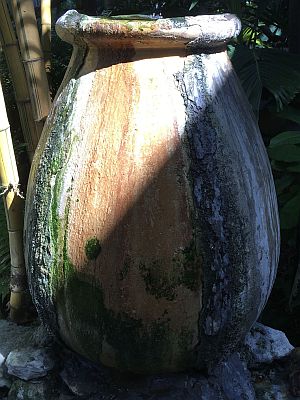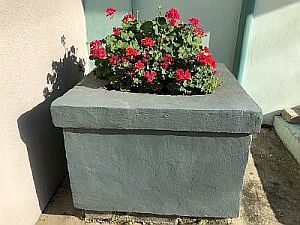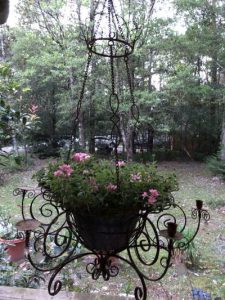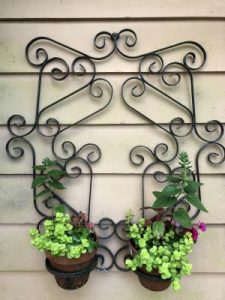
Containable Gardening
A container filled with a special plant or arrangement can be just the thing to bring some interest to a ho hum garden or ordinary planting or porch. Why is gardening in a container so popular? For one, it doesn’t have to take up a lot of time or space. It is easy to do. It doesn’t have to cost a lot of money and it can be easily moved or changed.
You can grow just about any plant in a container provided the container is big enough or the plant can fit. Containers can be anything unusual or one made specifically for plants. Plastic, concrete, ceramic, plaster or terra cotta are all good but some last longer, some dry out quicker such as terra cotta which can also crack in freezing temperatures, plastic is cheapest but is light weight and has a shorter life, ceramic can be most attractive but can be expensive. You can even use a container without a plant in it as many containers are pretty enough to showcase on their own.
I know you have heard of the Thriller, Filler, Spiller method (see Master Gardeners of Greater New Orleans publication on container gardens) when designing a container but you can do what you want to. You want to be able to see all of the plants from a certain angle and you want some balance and symmetry with your container unless you are looking for something asymmetrical or unusual.
Of course, you will need to choose plants with similar needs for light and moister as they will not thrive if they have dissimilar needs and are stuck in the same pot. You want to fill the plant with enough plants to fill the container adequately and not have a container that is too big or with empty spaces in between the plants. Many container arrangements are seasonal and you don’t want to have to wait for the plants to grow to a mature arrangement as seasons change before you know it and blooming plants may be finished blooming before you know it. You may need to take some plants out and add others once a plant does not look good anymore and this is completely okay.
Make sure you have adequate drainage holes in your container. For large containers at least five holes is good. You can use broken pottery pieces or small pebbles over the inside holes to keep the soil from running out but allow for water to drain through. I use the name brand potting soil with moister control and fertilizer in the bag. For large containers, I use old plastic pots, or packaging popcorn in the bottom of the container to fill up some the extra space and save on some soil. Make sure any fill material is lite weight.
For the flowering container arrangement, we want to add water soluble fertilizer like the blue stuff every time you water. You may need to water 2 times a day in the most intense heat of our summer. Put your finger in the soil to test if it is dry. If your container is still wet, then don’t water. When watering container plantings, water at least 2 times with enough water to run out of the plant’s drainage holes. This assures that the plants absorb as much water as possible and the water doesn’t just run off the sides of the root balls.

As we are finishing cool season plantings, it’s time to start using warm season plants in our containers. In our area, intense heat is an issue for us to think about as we continue with our container plantings.
Some good container plants for the intense heat are; potato vine, Sun coleus, Roses, lantana, Pentas, Zinnia, Torenia, ornamental grasses, Bacoba, Hibiscus, Vinca, Caladiums, Lysimachia (golden globes), Salvia, Sunpatients, Ruellia (red) name a few.
Some heat tolerant but take less sun are; Coleus, Lysimachia (creeping jenny), Impatients, Hydrangea, some Petunias, some Roses, Potato vine, Hoyas, to name a few.
By Karen Blackburn






